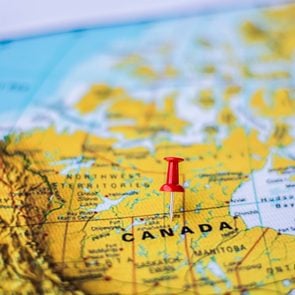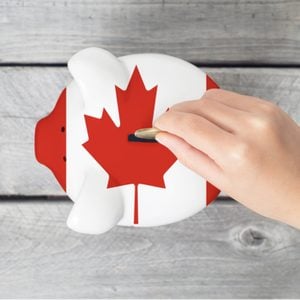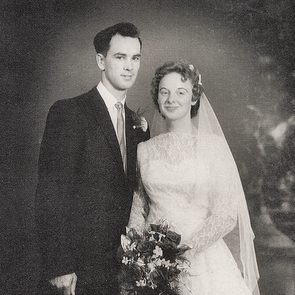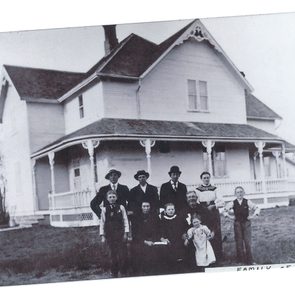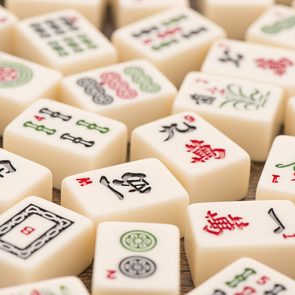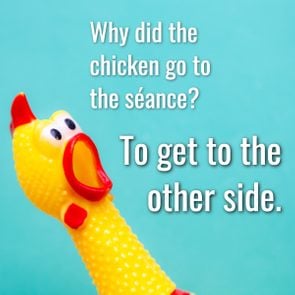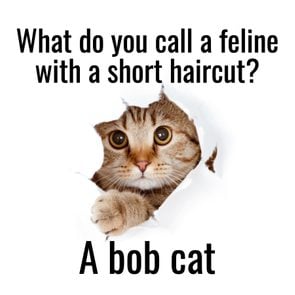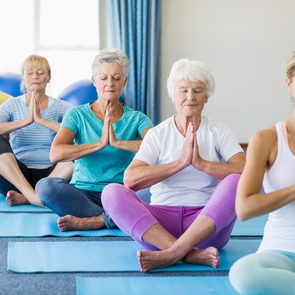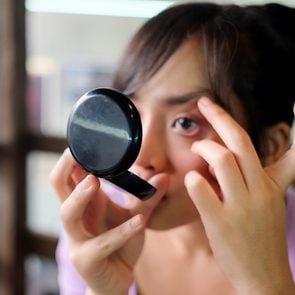After proroguing—or ending—the parliamentary session in August 2020, Canada’s federal members of parliament reconvened on September 23rd of that year for what was touted as a high-stakes session. It seemed highly likely that members of parliament would participate in a confidence motion, which had the potential to topple Justin Trudeau’s Liberal government and trigger a federal election. Defying political commentators’ expectations, this ultimately did not happen—although a vote of no confidence is always a possibility when a minority government is in power. Here’s how it works.
What is a Vote of No Confidence?
A confidence motion asks all members of parliament to vote on whether or not they have confidence in the incumbent Prime Minister and their party.
If the Prime Minister wins a majority of the votes in the confidence motion, he or she continues to govern. If he or she loses the vote (which is called a vote of no confidence) the Prime Minister must resign, forcing the governing party out of power.
What Triggers a Confidence Motion?
There are a few ways that a vote of no confidence can arise: through one of the opposition parties explicitly stating that the House has lost confidence in the incumbent government; through a question posed by the governing party; or, through the opposing parties’ rejection of an important piece of legislature, such as the budget or the Speech From the Throne (which establishes the government’s plan for the parliamentary session).
Votes of no confidence are only successful if the incumbent government is a minority government. In a minority government, the governing party only has the most seats in the House of Commons—not the majority. This means that when it comes to a confidence motion, the opposing parties’ total votes are enough to vote out the governing party. Minority governments rely on the support of the other parties to stay in power, so they need to be able to collaborate with the opposition parties and come to an agreement on important issues to avoid being voted out on a confidence motion.
What Happens if the Prime Minister is Defeated in a Vote of No Confidence?
Once the incumbents are defeated in a confidence motion, the Governor General decides what happens next. The GG will either invite the opposition parties in the House of Commons to try to form a government (by creating a formal coalition or by having parties make agreements to vote together in the House), or dissolve Parliament and call an election.
How Often Have Prime Ministers Been Voted Out?
Federal governments have only been toppled by votes of no confidence six times: in 1926, 1963, 1974, 1979, 2005 and 2011. Most recently, in 2011, Stephen Harper’s Conservatives were ousted after the Liberals, NDP and Bloc Quebecois disapproved of the Conservative budget and came together to vote them out during a confidence motion. This prompted the fourth federal election in seven years.
Is This Strictly a Federal Thing?
Confidence motions also exist at the provincial level, and they generally work the same way—though, provincially, what happens after the vote of no confidence is up to the Lieutenant Governor. In recent history, the Liberals in British Columbia were defeated in a very narrow (44 – 42) vote of no confidence in 2017. In that case, the provincial NDP teamed up with the B.C. Green Party who agreed to vote with the NDP on important matters.
Next, find out if you could really be jailed for failing to complete the Census.
What Can You Claim on Your Taxes in Canada?
Tax season is here, and if you’re like most Canadians, you’re looking for ways to minimize the amount owing to CRA after filing your personal income tax return. Fortunately, there are plenty of ways to reduce your tax bill—but you have to know where to start.
Here are 12 income tax credits and deductions you may not be familiar with. For personalized advice, we recommend speaking to an accountant or other financial professional.
Digital news subscription tax credit
If you pay for a digital subscription to a qualified Canadian news journalism organization, you may be able to get a tax credit, says Dean Paley, a Chartered Professional Accountant (CPA) in Burlington, Ontario. This credit allows you to claim an amount based on the cost of any digital subscriptions you hold featuring content that is primarily written news. You can request a tax slip from the news organizations you subscribe to, and the details of this tax credit are available here.
Student loan interest
Are you fresh out of school, or still paying down post-secondary loans? If you paid interest on student loans that were issued under the Canada Student Loan Act, Canada Student Financial Assistance Act or the Apprentice Loans Act—“basically, not a personal loan,” Paley says—you can probably deduct your interest payments. Here are the details.
First-time homebuyer tax credit
Worth up to $5,000, this is a credit worth knowing about if you recently bought your first home. A first-time homebuyer is defined by the CRA as an individual who “did not live in another home owned by you (or your spouse or common-law partner) in the year of acquisition or in any of the four preceding years.” Here’s more information on this tax credit and other incentives for first-time homebuyers.
Deductions for medical expenses
A lot of people don’t realize that the premiums they pay for private health care can be claimed on a personal income tax return, says Paley. “If their benefits coverage plan pays 80 per cent and they pay 20 per cent, they can claim that 20 per cent expense—and it does add up.” He lists braces and glasses as common examples, but even gluten-free food can be claimed by people with celiac disease who have adequate medical documentation. Other qualifying items include mobility aids, dentures, fertility treatments, laser eye surgery and more. Here’s a complete overview of these deductions.
Self-employment expenses
If you’re a self-employed individual who files taxes as a sole proprietor—especially if you work from home—there are plenty of deductions to be made. “You can deduct any expense that helped you make your sales—advertising, liability insurance, some meals and entertainment, travel costs, office expenses and supplies,” Paley explains, adding that you can also deduct expenses related to your utilities, home insurance and more. However, if you’re incorporated and paying yourself a salary, these deductions won’t apply.
Disability tax credit
“One [credit] that a lot of people don’t know about is the disability tax credit,” Paley says, explaining that the large range of conditions that apply aren’t all the same as what’s labelled a disability from a purely medical point of view. Paley notes that the credit is easy to apply for and can be worth up to $9,000. “It can be quite helpful in terms of offsetting some of the costs of various disabilities, and you can claim it for yourself, your spouse, your dependents or even parents that rely on you for support.” Here’s a look at the criteria for the disability tax credit.
Canada caregiver credit
This credit is available to any qualifying individual who supports a spouse, common-law partner or dependent (for example, a child or aging parent) with a physical or cognitive impairment. The amount you can claim is determined by your relationship with the person you’re providing care to. “It’s one that can be quite confusing to apply for, but a lot of people do qualify and they’ve made it a little easier to claim than in the past,” Paley notes. If you think you may qualify for this credit, consider reviewing the full details here.
Eligible educator school supply tax credit
If you’re an educator who bought school supplies out of pocket this year, this credit could be helpful. “Qualifying teachers and Early Childhood Educators can be credited for many classroom expenses,” Paley says, pointing us to this credit, which can be claimed to a maximum of $1,000.
Moving expenses deduction
Not every moving expense is deductible, but if you relocated more than 40 kms to be closer to your work or school (full-time studies only), you may qualify for a tax break. Both traditionally employed and self-employed individuals may qualify. Here are the full details.
Child care costs
Daycare bills are no joke, so be sure to claim them on your income tax return. You can also claim the cost of before and after school care, summer camps and other qualifying child care expenses. There are additional personal income tax deductions related to child support, adoption fees and other family expenses. A complete overview of these credits is available here.
Investment fees and carrying charges
Accountant fees, investment broker fees, even the cost of having your taxes done professionally—you can often claim these costs against your investment income. Canadians can also make deductions based on loans taken out for investment purposes. “If you borrowed to invest—for example, if you took out a loan and purchased some investment properties—you can claim that interest as a deduction on your tax return,” Paley says. The only caveat is that if you used the loan for things other than the investment property, the full interest amount isn’t eligible—just the interest on the amount used for your investment. Also, if you lost your job and had to pay a lawyer to help you recover severance fees or other money owed, you can write off those legal costs. Here’s a complete overview.
Charitable donations
If you’ve donated money to any accredited charities throughout the year, save those receipts. “This credit is pretty straightforward,” Paley says, and you can include any unclaimed donations made in the last five years. Here’s more information on claiming this common (but often overlooked) tax credit.
Now that you know what you can claim on your taxes, check out 10 finance podcasts worth adding to your playlist.
Finding perfectly non-toxic and green personal care products is a bit like looking for a needle in a haystack! The process of trial and error can result in a pile of unwanted stuff. My low-waste journey started in 2017. Today, as the founder of The Zero Waste Collective, my biggest piece of advice is to use up what you already have, then find replacements when needed. Once you’re ready to make the switch, here is a list of green personal care products to help you get a head start:
Toothbrush: Conventional toothbrushes are a source of plastic that’s filling our oceans and our landfills. So what are the alternatives? Bamboo toothbrushes, like those from Brush Naked, last just as long as a plastic toothbrush. Another way to reduce your waste is to opt for a toothbrush that includes a reusable handle with a replaceable toothbrush head.
Toothpaste: Many toothpaste tubes are made of a combination of plastic and aluminum, which makes them difficult to recycle. But not all toothpaste comes in a tube! Tooth powder sold in glass jars is one alternative. It is used much like normal toothpaste; simply wet your toothbrush, dip it in the powder, and brush. Toothpaste tabs, which you can crush in your mouth before you start brushing with a wet toothbrush, are also available from the brand Nelson Naturals, for example.
Floss: Instead of using plastic, some people opt for silk floss in a reusable glass jar or stainless-steel container. You can also get a water flosser (like Waterpik), which is endlessly reusable.
Razor: When I began to reduce my waste, I switched to a metal safety razor by Albatross Designs, which has a blade take-back program that upcycles the blades. I’ll never go back. I even find my metal safety razor offers a closer shave, too.
Shampoo and conditioner: I prefer shampoo and conditioner bars. If you want to go the refillable route, see if there’s a local bulk or zero-waste shop where you can bring an empty bottle to fill up on shampoo or conditioner.
Body wash and hand soap: I use bar soap for both. You can look into liquid refill options similar to those mentioned above for shampoo and conditioner. Another cool option is to buy concentrated mix that you combine with water in your own reusable hand-soap bottle.
Body and face lotion: One of my favourite solid lotion bars is made from beeswax; it’s smooth, smells nice and is perfect for travel. You can also get a glass jar refilled with body lotion. Looking for some DIYs? Check out the blog at The Zero Waste Collective!
Mouthwash: There are a few low-waste options for mouthwash, like getting it in a glass jar, finding refill stations locally and at zero-waste-dedicated shops, or getting concentrated tablets that you drop into water.
Deodorant: There are many deodorant options, but I often use Meow Meow Tweet, which is aluminum free. You can buy it in either a jar or a solid form that is packaged in a cardboard tube. There are also brands that offer a reusable tube that can be refilled. Simple as that!
Menstrual products: Swap out disposable pads for their reusable counterparts, like Mother-ease and leak-proof underwear. You can rinse reusables in a washing machine on a quick rinse cycle, then add in with towels or sheets to wash. Or, try a menstrual cup.
Makeup wipes, cotton balls/rounds: Go for reusable options! You can buy or sew (using an online tutorial) specialty makeup wipes and cotton rounds, or just use a face cloth.
Cotton swabs: There are both plastic-free and reusable alternatives to cotton swabs. There are reusable versions made by LastObject and NakedSwab, which come in a carrying case, making them easy to travel with.
Hairbrush: If you need a new one, opt for natural and renewable materials like wood and natural rubber that are sustainably sourced.
Tissues: I swapped these out for reusable and washable cotton hankies. I simply use them, toss them in the laundry, then wash them with my towels.
Tara McKenna is the founder of The Zero Waste Collective and author of Don’t Be Trashy: A Practical Guide to Living with Less Waste and More Joy.
From the book DON’T BE TRASHY: A Practical Guide to Living with Less Waste and More Joy by Tara McKenna. Copyright ©2021 by Tara McKenna. Published in the United States by Rodale Books, an imprint of Random House, a division of Penguin Random House LLC.
Next, find out the most dangerous ingredients in your beauty products.

Late one night, after doing some work on the family tree, I realized that hidden in my grandparents’ timelines was a love story about two young immigrants finding each other in Toronto—with a little help from a dryland farmer in Saskatchewan.
Herbert and Julia were both born in England: Herbert William Easto in 1886 in the Borough of Wandsworth in South London. Julia Holborow was born in 1891 in Tetbury, County of Gloucestershire in England’s South West region. Distance and class distinctions would surely have kept them apart in England. However, as fate would have it, both immigrated to Canada in the early 1900s.
Herbert’s adventure began in 1906 with the decision to immigrate to Canada. He left England aboard the Dominion Line SS Norseman bound for Halifax. It’s not hard to imagine him peering out over the dark waters of the Atlantic, musing, “Wot the ’ell ’ave I got myself into?”
He’d already signed up with the Canadian Employment Agency, which connected new immigrants with employers. The agent assured him of an office job in Toronto. When the ship docked in Halifax, he was instead herded onto a transcontinental train bound for Swift Current, Saskatchewan. Blimey! Someone at the CEA had changed Herbert’s occupation listing from “clerk” to “farmer.” After endless gruelling days on a bone-shaking “Colonist” rail car, Herbert arrived—tired, messy, smelly, miserable and fearful. During the journey, he’d heard accounts of terrible working conditions, abusive employers and harsh living arrangements. Oh, crikey! He knew nothing of farming. Perhaps his boss, angry at being saddled with a lanky office clerk from London, would leave him standing on the platform!
Did the wind ever stop blowing in Swift Current? How could a farm even exist in this dry, Prairie grassland? Farmer Murphy, while not impressed with his new farmhand, had few options. It was seeding time. He was in no position to be picky. So began Herbert’s stint on a dryland farm just outside Swift Current.
Mr. Murphy, a jovial Irishman, and his sturdy German wife, had two strong and capable daughters. Happily, the family found Herbert’s cockney accent and bumbling efforts at farm work endearing. Whatever his shortcomings, he approached each challenge with courage and a chipper resolve. Herbert never grumbled. Farming taught him a lot about hard work, family, Prairie hospitality and handling horses. He grew fond of the Murphy family, who had opened home and hearts to a hapless stranger. He had only one lingering complaint: the head of the family was addicted to cornbread! And so the family ate it at breakfast. They ate it at lunch. They ate it as dessert drenched in maple syrup! And he never could get used to the wind, blowing dust and extremes of heat and cold.
Sometime between 1909 and 1910, Herbert bid farewell to his Saskatchewan friends, climbed aboard a transcontinental train and headed east. Years later, he told me, “I got on that train and didn’t get off until it reached Toronto. Not even at a station, afraid I’d be left behind.”
He’d barely gotten off the train in Toronto when a beefy Englishman collared him:
“You English?”
“Yes.”
“Protestant?”
“Uh…yes?”
“Can you drive a team of horses?” “Oh, that I can do, yes, indeed.” “You’re hired. Follow me!”
And that’s how Herbert William Easto became a brewery delivery man driving a horse-drawn dray through the streets of Toronto.

Julia’s Side of the Story
Julia’s father, Robert Holborow, died accidentally in December of 1900. Before Robert’s death, the family lived a comfortable life in Tetbury as members of England’s rapidly expanding middle class of wealthy merchants and shopkeepers. Unlike many men of the era, Robert made provisions in his will for his wife Fanny and their three daughters. In 1902, Fanny was married a second time to Walter H. Wakefield, 15 years her junior. According to some accounts, the union was not well received by her former father-in-law.
After five years of marriage and two children, Fanny and Walter transplanted their blended family to Canada. In May of 1907, Julia, with her mother Fanny Holborow-Wakefield, her Wakefield siblings Harold and Dorothy, and her sisters Esther and Annie Holborow, sailed from England. The ship was the CP Line SS Lake Manitoba. After arriving in Quebec City, the family made their way to Toronto, where young Dorothy tragically died two weeks later. Walter Wakefield travelled alone to New York City aboard the White Star ocean liner Celtic before journeying north to join his family in Toronto. Walter Wakefield soon found work as a grocery clerk. Fanny took in boarders to help make ends meet. For the Holborow girls, this was an embarrassing step down from their previous life in Tetbury.

Love Comes Calling
As with most of Toronto’s English immigrants, ale was a staple in the Wakefield household. Mrs. Wakefield usually met the drayman at the curb to collect the week’s delivery. One sweltering, humid summer day, she sent Julia in her stead. The petite strawberry blonde with the sensible shoes and the musical voice was beyond handsome. She was magnetic. The drayman—Herbert—was smitten! He must meet her! He peppered a few neighbour women with questions when he delivered their ale. Some smiled knowingly; others thought they should report him to the constabulary. He learned that the family took in male boarders, and he needed a place to stay. Perfect!
Clutching his pay packet, Herbert called hopefully at the house on Major Street, grip in hand. And that’s how Herbert met Julia, the love of his life. Without the clerical error that sent the cockney lad to Saskatchewan, where a kind farmer taught him how to handle a team of horses, chances are my grandparents would never have met. And I’d not be here to share this tale of two young immigrants from vastly different social classes who met and fell in love in Toronto.
Herbert William Easto and Julia Holborow were married on April 8, 1911. The groom’s father, Henry, and mother, Frances, came all the way from England to attend the wedding. The couple had five children: Lloyd, Robert, Joyce, and two infants who did not survive past their first year, Robert and Ronald. After giving up brewery work, Herbert spent the rest of his working life in the bookbinding department of Ryerson Press. True to his word, he rarely left the Toronto City Limits, but he and Julia did return to England on their 50th wedding anniversary. Herbert died in 1963, Julia in 1977. Their ashes rest together at St. James Cemetery near the Chapel of St. James-the-Less, Toronto.
Next, read the powerful story of how an act of kindness meant the world to one postwar immigrant family.
Everyone knows how to play Monopoly. The rules of the classic property-gobbling, argument-generating board game are passed down through oral tradition like a beloved family history or noxiously corny dad joke that the old man just can’t help but bust out at every family gathering. But here’s a question for you: When’s the last time you actually sat down and read the official Monopoly rules?
If you are like 68 per cent of players, your answer is probably “never.” That’s right: according to an official Hasbro survey, most Monopoly players have never actually read the rules, but rather learned them from other players and taken their word as gospel. And it should come as no surprise that, as a result, we have all been playing Monopoly completely wrong our entire lives.
Playing the game as its makers intended quickens the pace, reduces the tedium, and provides more head-to-head player interaction. Here, according to Hasbro’s official rule book, are the three biggest Monopoly mistakes you’re making.
You’re buying property wrong
Most players fatalistically resign themselves to the idea that one must land precisely on a property in order to have a chance at buying it. But, as a quick glance at the rule book points out, that’s not the case. If a player lands on an unowned property but does not wish to buy it, “the Banker sells it at auction to the highest bidder. Any player, including the one who declined the option to buy it at the printed price, may bid.” Yep—any property that any player lands on has a chance to become yours right away, no matter where you are on the board.
As you can imagine, this speeds up the gameplay considerably, taking a lot of the random chance out of property purchases and adding a greater element of strategy. Landed on Baltic but don’t feel like buying it at face value? Let it go to auction and try to squeeze out a better deal. Want to trick your friends into buying a bum property for more than it’s worth? Drive up the bidding with a ruthless poker face that would make that little silver terrier hobble away in horror. Property auctions are like adding a whole new game into the game. Start doing it ASAP.
You’re collecting “free parking” wrong
You’re probably used to lining your pockets with Community Chest money every time you plop down on free parking. This, sadly, is also wrong. According to the official rules, “A player landing on this place does not receive any money, property or reward of any kind. This is just a ‘free’ resting place.” If a player tells you that anyone who lands on free parking gets to collect all the money accrued through taxes and card draws, they are the victims of contagious misinformation that will only make the game longer and more tedious. Hasbro has stated that they receive hundreds of calls a year asking about this, despite the rules printed plain as day in every game box. Free parking is merely meant to be a space where the player need not worry about paying rent. Late in the game, any space without property fees is a godsend. Speaking of which…
You’re going to jail wrong
You’re not allowed to collect rent on your properties while in jail, right? Wrong. Per the rule book, “Even though you are in jail, you may buy and sell property, buy and sell houses and hotels and collect rents.” The only real penalty of jail time is having your token forced to the jail-side of the board and being prohibited from moving for three turns (unless you roll doubles, use a get out of jail card, or pay a $50 fine before you roll). Indeed, jail is actually one of the best places you can land in the late game, when the board is packed with your opponents’ costly properties. As long as you’re chilling in the slammer, you run no risk of landing on your rivals’ rent traps. Meanwhile, they still have to pay you for landing on yours. “Go directly to jail”? Yippee!
This is Monopoly as it was meant to be played, and we only have ourselves to blame for endless boring games that go off the rails like so many Reading Railroad freight trains. The reason Monopoly lasts forever, as YouTube’s Dan Brown points out, is that the game ends when the money runs out; when players artificially inject extra money into the game’s economy—say, for landing on free parking or providing player-to-player loans (also forbidden)—then the game naturally goes on and on.
Stick to the rules—the real, printed rules that came with the game—and a crazy thing happens. Monopoly becomes fun.
Next, discover the crazy UNO rule you probably didn’t know about.
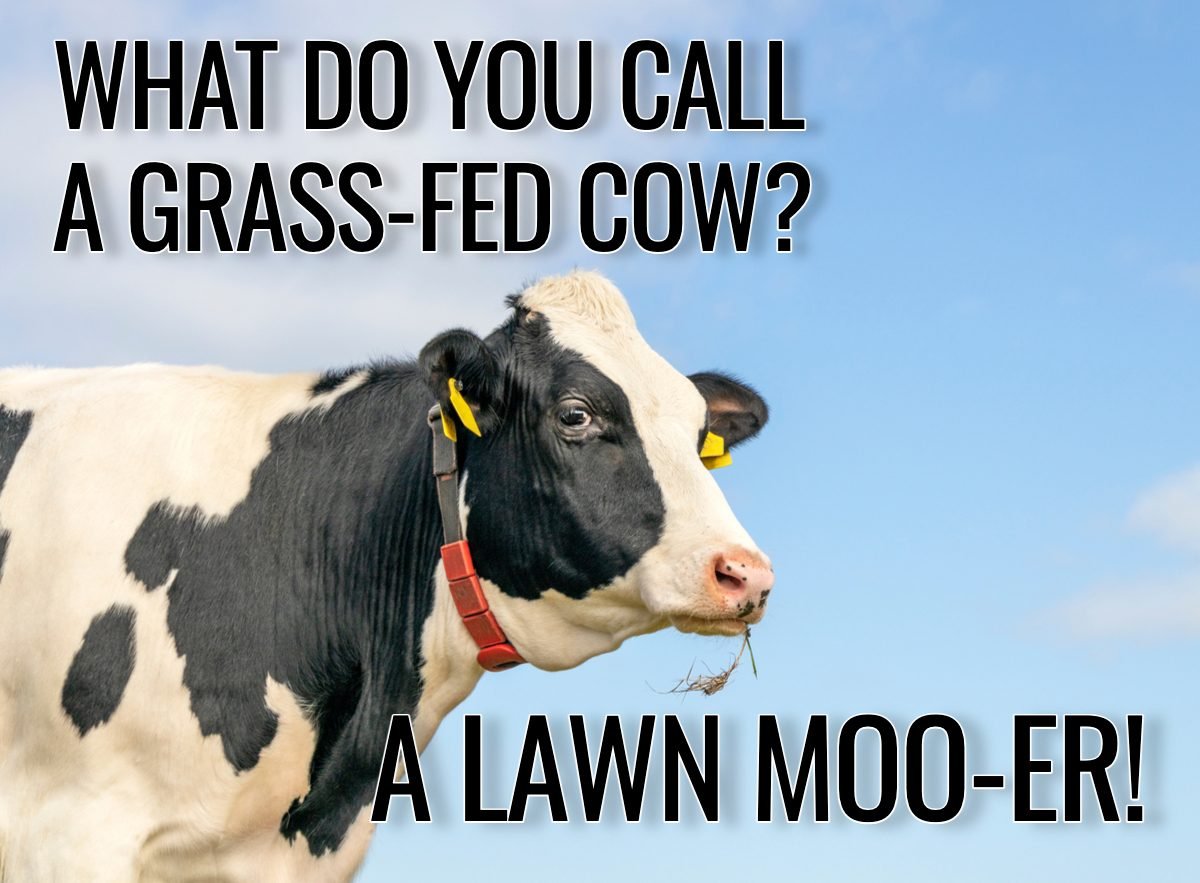
Short Cow Jokes For Rapid-Fire Cow-medy
Q: What do you call a grass-fed cow?
A: A lawn moo-er!
Q: What happens when you talk to a cow?
A: It goes in one ear and out the udder!
—Reddit.com
After the cow jumped over the moon, the other cows said “That’s udderly ridiculous!” and refused to jump. They were grounded beef.
—@PuriConsulting
Q: What did the mama cow say to the baby cow?
A: It’s pasture bedtime.
—Buzzfeed.com
Nothing is ever black and white… unless you’re a cow, in which case, you’re both.
—@JKruew
Q: What did the cow say to her misbehaving calf?
A: I am not amoosed by you.
—Thoughtcatalog.com
Q: What do you call a cow that just gave birth?
A: De-calf-inated.
—virtualedge.org
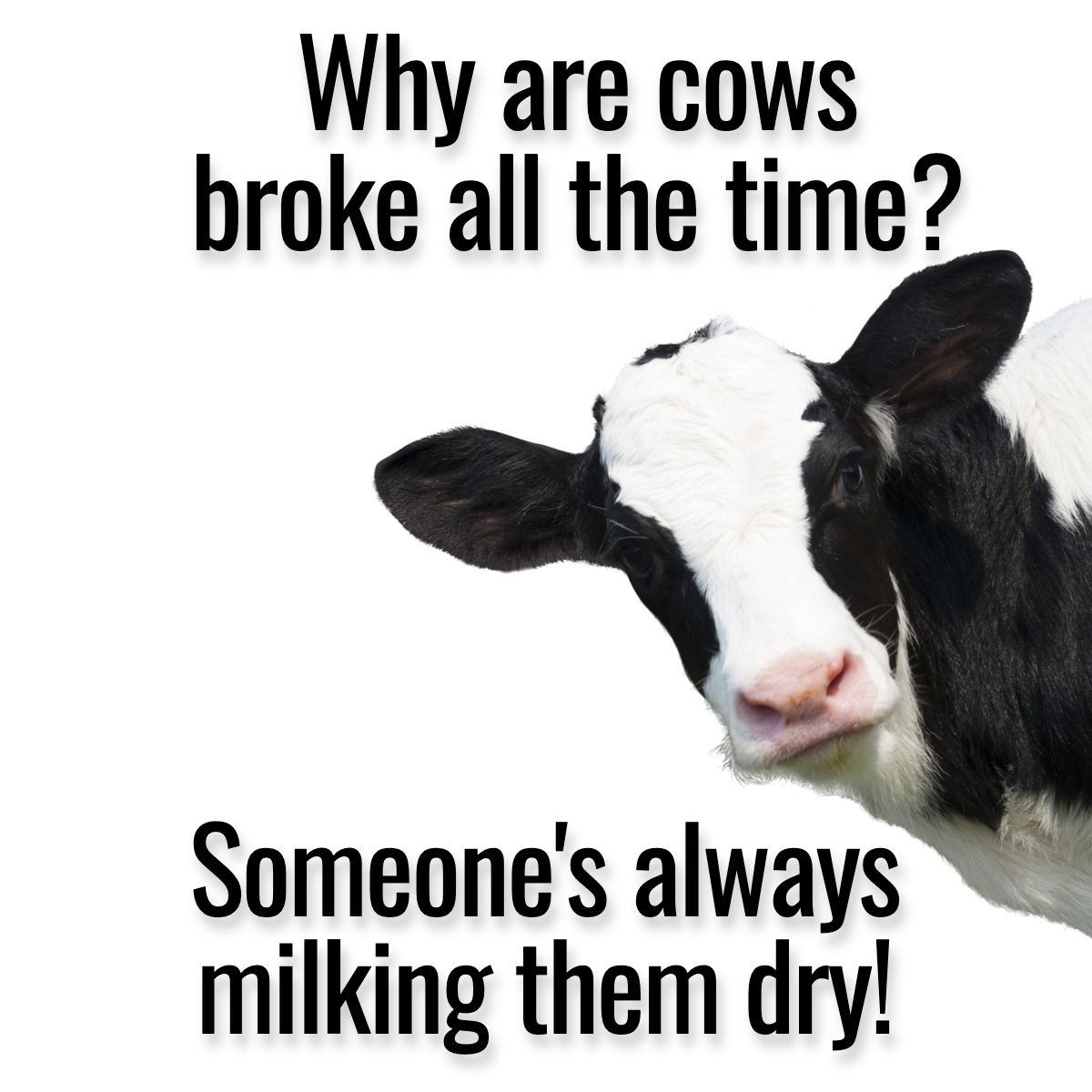
We’re Milking These Cow Jokes For All They’re Worth
Q: What do you get from a pampered cow?
A: Spoiled milk.
—@punsandoneliner
Did you see they made round bails of hay illegal in Wisconsin?
It’s because the cows weren’t getting a square meal.
—Buzzfeed.com
The secret service surrounded the president with dozens of cows—they were trying to beef up security.
—@MaryFelzkowski
Q: Why are cows always broke?
A: Someone’s always milking them dry.
—Thoughtcatalog.com
I’m looking now but I can’t see the cows at the moment, they must be camooflaged.
—@balatacarter
Q: Where do cows get all their medicine?
A: The farmacy.
—virtualedge.org
Q: Where do cows eat lunch?
A: In the calf-eteria.
—Thoughtcatalog.com
Here are 25 knock-knock jokes that are genuinely hilarious!

Another Round of Legen-Dairy Cow Jokes
Q: What do you call a cow that talks to himself?
A: A solilocow.
—@rudecows
Wanted to make a cow joke but you’ve probably herd ’em all.
—@rid1tweets
Why was the cow so afraid of messing up?
Because the steaks were high.
—Thoughtcatalog.com
Q: What subjects are a cow’s favourite?
A: Moosic, psycowlogy and cowculus.
—@KtizoCrafts
Q: What’s a cow’s favourite holiday?
A: Moo Year’s Eve!
—@learnfunnyjokes
Don’t miss this side-splitting collection of the Internet’s funniest cat GIFs!

The Laughing Stock
Q: Why did the cow win an award?
A: She was out standing in her field.
Q: What’s a cow’s favourite moosical note?
A: Beef-flat!
—Reddit.com
Q: What’s it called when a cow spies on another cow?
A: A steak out.
—@beefjerkyexp
Q: What do you call a sleeping bull?
A: A bulldozer.
—Reddit.com
Q: How does a cow get to the moooon?
A: It flies through udder space!
—Reddit.com
Q: What do you get when you cross a cow and duck?
A: Milk and quackers.
—@padairymens
If these cow jokes gave you a giggle, don’t miss our countdown of the funniest dog jokes of all time.
A towel
One person’s towel is another person’s resistance band! Use a towel to help with stretching or for a killer arm workout. Looking for a leg challenge? On a smooth floor, assume the plank position with a small towel under each of your feet. Then, in a very slow and controlled manner, try gliding your legs apart and then back together again. Feel the burn!
A wall
You won’t find a home without at least four of these! Walls provide stability when you’re practicing some stretching, or working your quads and glutes by doing some wall-sits.
Stairs
Why invest in a StairMaster when you’ve got a perfectly good staircase at home? Walking or running the stairs is a great way to get your heart pumping and glutes burning—without spending a cent.
Soup cans, water bottles or laundry detergent jugs
Treat any of these household items like hand weights or dumbbells. Give your arms a major workout by doing some front raises, tricep kickbacks or overhead presses.
A broom
Besides sweeping, a broom can also give your core, hips and glutes a workout. Next time you’re sweeping the floor, shake things up by adding some hip hinges or oblique twists to your usual routine.
A chair
A sturdy chair (without wheels) can make an excellent addition to your workout routine, whether you’re trying to perfect your squats, practice some leg raises or engage in chair yoga. For an even greater challenge, check out this 5-5-5 Chair Workout that incorporates strength, cardio, and flexibility.
A countertop
Strengthen your arms and chest by practicing several sets of countertop push-ups. These are a great activity to sneak in while you’re waiting for water to boil or the oven to preheat.
Now that you know how to work out using household items, find out what happens to your body when you start walking 10,000 steps a day.

What It’s Really Like Living on Vancouver Island
I have had the privilege of calling Vancouver Island my home for the past 30 years. Stunning ocean views and diverse forest trails are within minutes of where I live in Victoria. I feel the harmony, balance and beauty in the magnificence of nature as I take in the fresh, clean air; the ocean breeze against my skin; the goosebumps appearing on my arms as I watch a spectacular, breathtaking sunset. Vancouver Island is not something that can be captured and shared; rather it needs to be experienced. But visitors beware: this nurturing, welcoming, mystical locale is highly addictive.
Here’s why you should not live on Vancouver Island:
1. You will squander your days walking on beautiful, tranquil beaches. You will have to tolerate stunning views of the ocean as far as the eye can see.
2. You will waste precious time exploring fascinating tidal pools filled with marine plants, organisms and unique rocks. You will have to become familiar with reading tide tables so you can access these rich, colourful pools during low tide.

3. Living on Vancouver Island, you may have to share your sushi lunch with the otters. You will often be surprised by wildlife sharing their home with us.
4. Visiting the west coast of Vancouver Island will spoil you forever. The spectacular, breathtaking sunsets will leave you awestruck, grateful you are here to witness the beauty on our planet.
5. If this is your first time on Vancouver Island, you will not want to miss the incredible views on the Malahat Drive on Highway 1. You may want to take an alternative route home, the Pacific Marine Road, on a busy long weekend in the summer months. The extra two hours of driving will turn into a full day, sightseeing adventure. This scenic loop offers breathtaking ocean views, winding mountain passes, and enchanting old growth forests. Another entirely wasted day…in paradise.
6. You will be amazed by the vast number of shades of green appearing in nature. A rich diversity of mosses, varied ferns and many species of magnificent trees thrive in our coastal rainforests. Green will become your new favourite colour.

7. Hiking with family and friends of all ages will consume a great deal of your leisure time. You will never run out of places to explore. Decisions, decisions.
8. People are neighbourly and approachable on Vancouver Island. Expect a friendly wave with the obligatory wave in return. You will have to constantly say “Hi.” A tiresome custom.

9. Hundreds of beautiful, inspirational pictures will overfill your photos library every week. Unfortunately, you will have the daunting task of selecting only a few favourite ones to share.
10. Most importantly, will you be able to keep The Island our little secret? I think not! Especially when you call beautiful Vancouver Island your home.
Now that you know what it’s like living on Vancouver Island, discover 10 essential experiences along Canada’s west coast.
August 2019 was especially damp and foggy in Aylsham, a picturesque town 15 minutes from England’s eastern shores. But Nick Farrow, a semi-retired 65-year-old who works in branding and design, had sunshine on the mind. Along with his partner, her son and his adult daughter, Farrow was about to embark on a week-long vacation to Bali.
Not long before the trip, the family received a series of travel vaccines, including shots for typhoid and hepatitis A and B. Shortly after, Farrow began to experience flu-like symptoms: fatigue, breathing difficulties, aches all over. And at random, his heart would start beating harder and faster than ever, preventing him from falling asleep. “I’d sit there at night, and it felt like there was a bird fluttering in my chest,” he says. The rest of the family, who had received the same immunizations, felt no adverse effects.
Farrow had a history of atrial fibrillation—an irregular heartbeat—but these were new and alarming symptoms, so he arranged to see his GP. By the time the appointment rolled around, the flu symptoms were gone; the nurse he saw surmised that he coincidentally caught a bug around the same time he got the vaccinations. But the heart problems remained, so he was referred to a cardiologist and advised against going to Bali.
When Farrow visited the cardiologist, a number of tests, including a heart ultrasound, chest scan and electrocardiogram, revealed nothing unusual. But before the tests, when the doctor had listened to Farrow’s heart and lungs through his stethoscope, he’d noticed a slight rasp in Farrow’s breathing. He wasn’t sure what that might indicate, so he redirected Farrow to a lung specialist.
A Strange Black Spot
When the results came back from a lung scan in October 2019, they revealed something no one had expected. Nestled behind Farrow’s sternum, in the middle of his chest, there was a strange black spot. It wasn’t on his lungs, nor his heart, but on his thymus. This little known but crucial gland sits between the lungs, just above the heart, and helps develop virus- and infection-fighting T-cells. The thymus remains active only until puberty, at which point it typically begins to shrink, replaced by fat. But in Farrow’s case, it wasn’t reducing in size. It was growing.
The lung specialist had two hypotheses to explain the swelling. It could simply be an enlarged thymus, a benign condition with several possible causes but no serious consequences. Or, if Farrow was unlucky, it could be a thymoma, a rare cancerous tumour that affects fewer than one in 1.5 million people. “It’s really weird when someone tells you you might have cancer. It’s almost unreal,” says Farrow.
The only way to know which theory was correct was a biopsy. But because of the gland’s location, that would require, as Farrow puts it, “Cracking open my ribs and ripping them apart, Viking-style.” Whatever its cause, the growth helped explain his heart issues. The thymus presses up against vital blood vessels and the pericardium (the sac that houses the heart), so a bigger-than-normal gland can result in heart and blood-flow problems like those ailing Farrow. The specialist recommended monitoring the black spot’s progression to determine whether it was cancerous. “It won’t kill you in six months,” he assured Farrow. So they set a follow-up date in April 2020.
Of course, that appointment never happened. Due to the pandemic, Farrow wasn’t able to return for another year, during which time he continued to experience hours-long palpitations about twice a month. “I was getting worried, because I thought this thing was growing inside of me, and I couldn’t get into a hospital,” he says.
Cutting-Edge Technology
Finally, in October 2020, Farrow had another CT scan, which confirmed his worst fears: it was cancer. The black spot had grown two millimetres. Fortunately, the tumour was confined to the thymus, and Farrow’s doctors were confident they could remove it through laparoscopic surgery, which involves inserting minuscule knives into keyholesized incisions.
While Farrow waited for surgery, a colleague introduced him to her husband, Peter Harper, an oncologist who recommended Farrow forgo the laparoscopic surgery and instead come to London Bridge Hospital for robotic surgery. Harper promised it would be more effective and easier on his body.
The machine, produced by an American company called Intuitive, is called the da Vinci Xi surgical system, named after the Renaissance man who advanced the study of anatomy and is credited with inspiring the design of the world’s first robot.
There are nearly 6,000 da Vinci devices in hospitals around the world, used for a wide range of operations, including heart, lung, gallbladder and kidney surgeries. “It’s a rather fierce-looking beast,” says Thomas Routledge, the surgeon who would remove Farrow’s thymus. The machine has two elements: a multi-armed contraption with an arsenal of fine instruments (knives, cameras, clamps) that would hang over Farrow’s bed, and a console that would provide Routledge a 3-D image of the surgical area while he manipulated the device’s arms with foot pedals and a control pad. “It’s not unlike a sophisticated version of a PlayStation controller,” says Routledge, who uses the machine for most of the surgeries he performs.
Over the course of 90 minutes, Routledge removed Farrow’s tumour and a portion of the surrounding thymus; they chose not to remove the entire gland because of the risk of damaging nearby nerves and causing long-term breathing problems. Though Farrow spent that evening recovering in the ICU and a few more days in hospital, he was soon back home and working again. “It stung a bit,” he says, “but in fairness, I felt pretty good.”
Two weeks later, a follow-up scan revealed Farrow was cancer-free. To his relief, the heart palpitations also stopped. Today, Farrow’s life is back to normal. In October 2021, he went on a long-overdue family vacation to the Canary Islands. By then, the surgical scars on his torso were already fading. “No one even noticed them,” he says. “I feel very grateful.”
Next, read the incredible story of how a woman’s x-ray revealed the reason behind a lifetime of stomach pain.

“Change the name. TGH is a Totally Great Hospital.”
That’s what Allan Ingram thinks about Toronto General Hospital (TGH), part of University Health Network (UHN), after his successful liver transplant.
Due to liver failure, Allan was admitted to UHN’s Ajmera Transplant Centre at TGH in 2014. Unfortunately, that didn’t mean there was a donor liver available to him.
“People have to understand, it’s not like a normal wait where you go on a list, you see people go, you move up,” says Allan. “It doesn’t work that way, because everything is governed by the MELD score.”
MELD (Model for End-Stage Liver Disease) is a scoring system used to assess patients for the severity of chronic liver disease. Allan’s score was not high enough for transplant to be considered a real possibility, and Allan and his wife Margaret were losing hope. They knew age 70 was the cut-off, and Allan was turning 69 with his health rapidly deteriorating.
In April 2017, an MRI scan indicated the presence of a lesion on his liver which bumped up his MELD score.
At 11 p.m. on June 4, 2017, they got the call.

“The phone rang and I can’t remember the exact words, essentially it was ‘This is Toronto General. We think we have a liver match for you. Can you get here as quickly as you can?’ We got there as quickly as we could,” says Allan.
There were delays due to the operating room schedule and unforeseen circumstances which had both Allan and Margaret worried that the procedure might be cancelled. But at 6 p.m. the following day, Allan went into surgery to receive his new liver.
“I could not say one negative word about Toronto General Hospital, from my experience through the transplant and my experience before and after,” says Allan.
Allan and Margaret were so grateful for the care he received that they decided their ongoing donation to UHN Foundation was not enough. They wanted to contribute to the hospital through a planned estate gift and decided to leave a gift in their will.
While they usually give smaller amounts to various charitable organizations, they wanted their gift to make a larger impact.
“As Allan said, Toronto General gave us our life back,” says Margaret. “We decided we would like to do something down the road to help with the tremendous research that is going on at UHN.”
While the majority of their estate will be left to their son who has four children of his own, Allan and Margaret worked with staff at UHN Foundation and then consulted a lawyer, who easily changed their wills to include UHN Foundation as a beneficiary.
Only a year after the surgery, the couple went on a river cruise in France to celebrate their wedding anniversary, something they hadn’t been able to do in a long time. The following year they travelled to the South of France and Italy, only stopping their travels due to the COVID-19 pandemic.
Today, Allan is grateful for the gift he has been given.
“You should perhaps change the name of the hospital. I would allow you to leave the initial TGH, but change it to Totally Great Hospital. Because without what was done to me there, I would not be alive today. It’s as simple as that.”
With a gift in your will to UHN, you can support medical breakthroughs that will transform patient care for generations to come. The promise of a healthier world starts with you. Learn more at UHNfoundation.ca/mylegacy.
